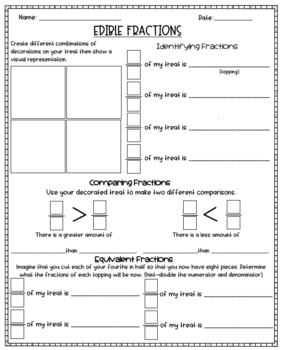- PDF
Description
This engaging activity will help your students make real world connections to fractions! For this activity I used 4 mini sized Rice Krispie treats that I found on sale after Halloween along with frosting, sprinkles, and mini M&M's as toppings. However, I also made a circle template that could be used with other treats like cookies or cupcakes. You could also do this worksheet without food by just having your students color their creations!
A little tip, I modeled each step of this for my students including the decorating. I wanted to show them that they should not decorate the entire four pieces the same or decorate each single pieces differently (so that they would have interesting fractions to work with). For example, I modeled frosting 3/4 blue, 1/4 pink, 2/4 with sprinkles, etc.
I hope this helps your students with their fraction skills!




